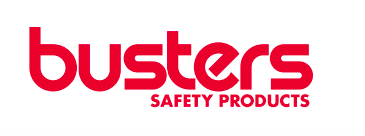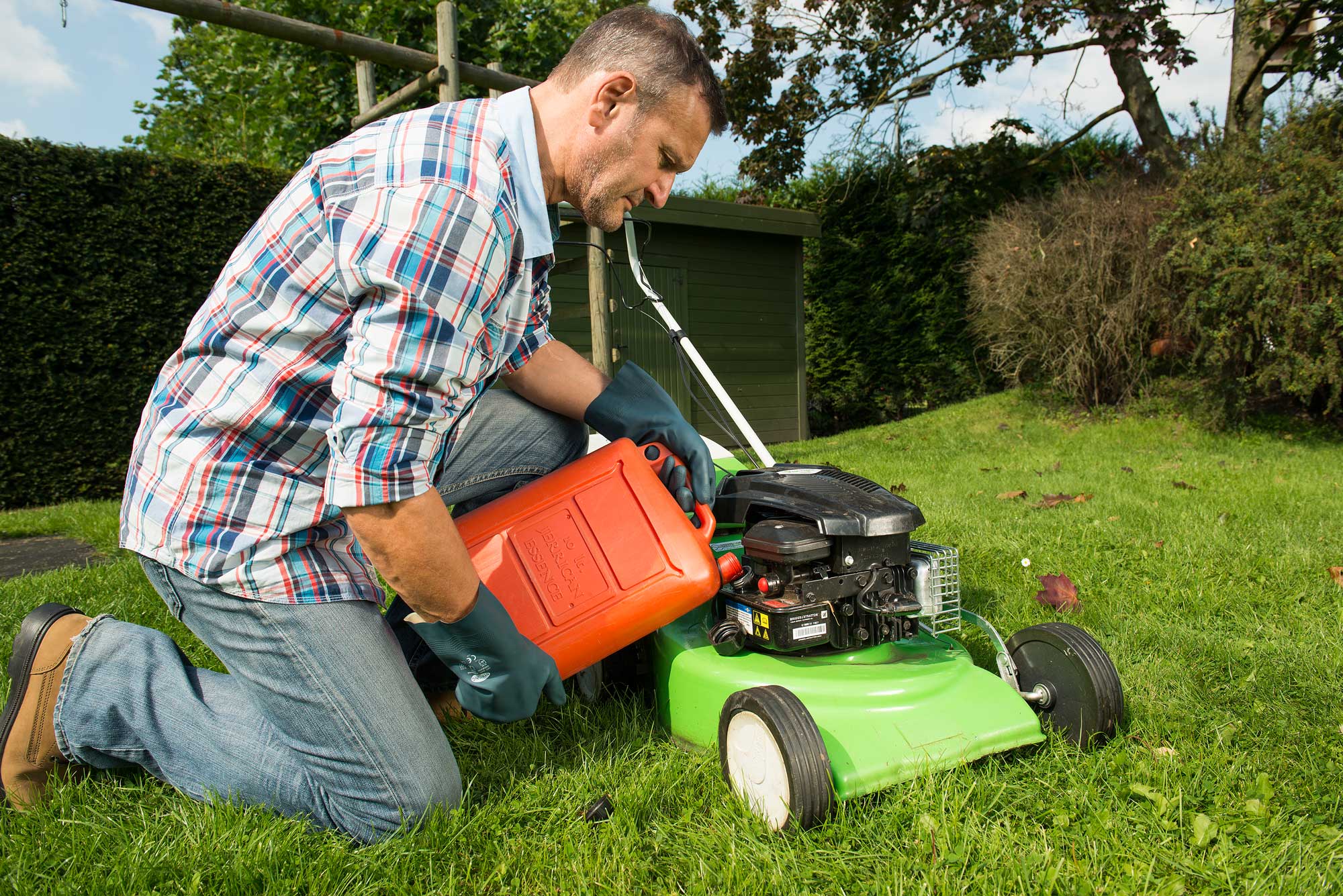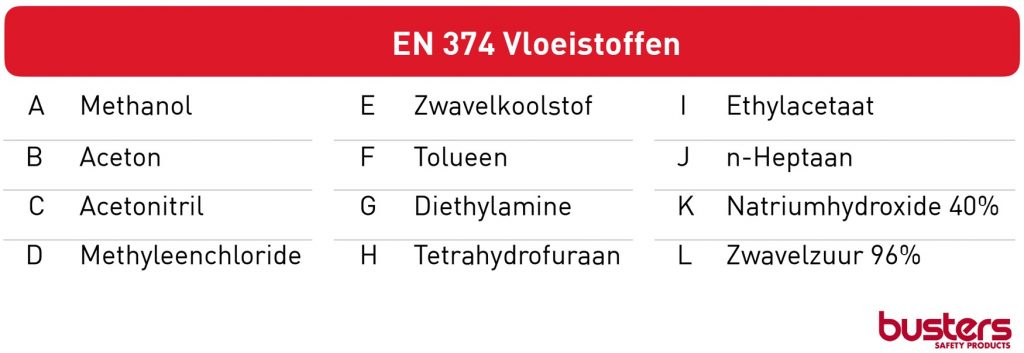The EN 374:2003 standard on work gloves from Busters means that the gloves protect against liquids. They can protect against ‘ordinary’ liquids, liquid chemicals, and microorganisms.
How do you choose work gloves that protect you adequately?
It isn’t always easy to figure out all the different pictograms, standards and quality marks. With the right help, you can find the necessary information on every package so you always make the best choice at the building supply store. Always follow the instructions in the manual for correct use.
Liquid vs. Chemical liquid vs. Microorganisms
Not all liquids are equal. That is why the EN 374 standard is divided into 3 categories:
Liquid-tight work gloves
These work gloves protect against ‘ordinary’ liquids such as water and household cleaning products, for example.
Work gloves with chemical protection
The EN 374 Erlenmeyer flask pictogram is present on all Busters work gloves that can withstand various liquid chemicals. The liquids they protect against can be seen by the letters under the pictogram.
Work gloves with protection against microorganisms
The EN 374 pictogram with biohazard symbol is present on all Busters work gloves that are resistant against microorganisms (not viruses).
Go for a minimum quality level of 1.5 (sometimes also called performance level 2). This level is determined by the scope and results of spot checks.
When we talk about liquid-tight gloves, they must be fully watertight and depending on the type they can also provide protection against certain chemicals. Chemical risks pose a serious threat during certain tasks. Protect yourself adequately. It is very important always to use a corresponding permeation table to determine suitability for the application. Every material has its advantages and disadvantages. These properties help you to choose the right work gloves.
Permeation Index
The permeation index indicates how long the glove protects against various liquids. In simple terms, this index shows how long the work gloves can be used without absorbing liquid or letting it through.
Note: Do not use the work gloves for longer than recommended by the index. Only use chemical gloves for one session. Adding up the number of minutes over various moments or days is not valid because the gloves are affected by the liquid chemicals after first contact.

- Permeation score 0: less than 10 minutes liquid-tight
- Permeation score 1: minimum 10 minutes liquid-tight
- Permeation score 2: minimum 30 minutes liquid-tight
- Permeation score 3: minimum 60 minutes liquid-tight
- Permeation score 4: minimum 120 minutes liquid-tight
- Permeation score 5: minimum 240 minutes liquid-tight
- Permeation score 6: minimum 480 minutes liquid-tight
Liquid chemicals
A ‘chemical glove’, or a work glove that can resist against certain liquids, is tested for permeation per liquid. Work gloves must have a minimum permeation score of 2. Gloves with a permeation score of 0 or 1 are not eligible for this.
The different liquids are represented by a letter. These letters can be found below the pictogram with Erlenmeyer flask.
Summary
It is important to choose work gloves that protect you adequately. Take into account the type of liquid and the maximum duration of use.
Chemical risks pose a serious threat. There are certain tasks for which chemical resistant gloves must always be worn. It is very important always to use a corresponding permeation table to determine suitability for the application.
Always protect yourself as well as possible. Choose the appropriate personal protective equipment for a specific task. This way you will not only work safely, but also better and more comfortably.
- Choose work gloves with the right level of protection
- Check carefully what liquids the gloves protect against
- Take the possible risks into account and use maximum protection
- Also look at specific standards (#link to standards overview page)
- Always work comfortably and safely
- Tip: Be sure to remember a face mask and safety glasses
- Tip: Find the product you need in your nearest building supply store or garden centre.


